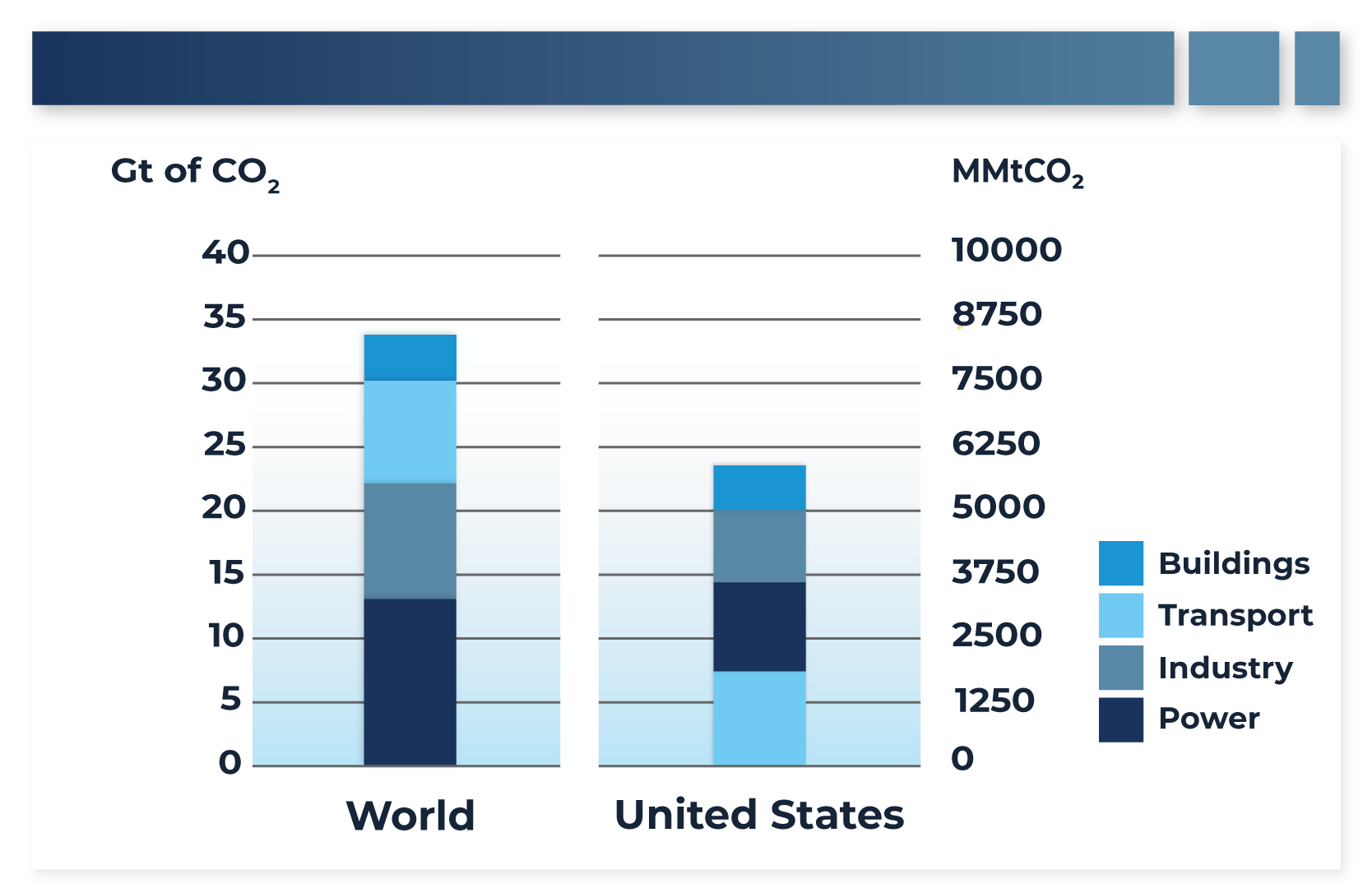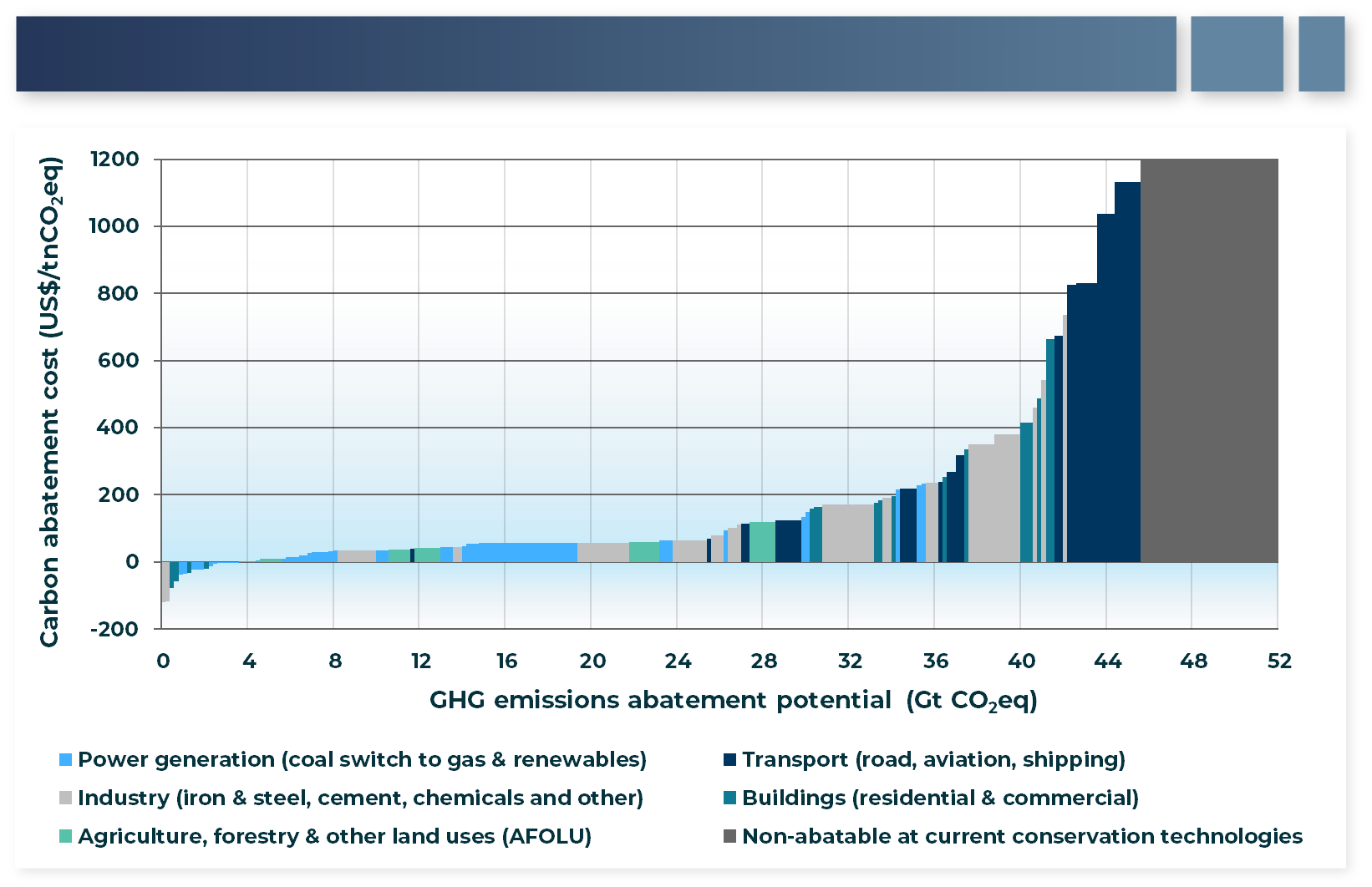# Accelerating Innovation to Achieve Net Zero Emissions
There is a growing momentum worldwide—led by countries, cities, and companies—to decarbonize all sectors of the economy and achieve net-zero CO2 emissions around midcentury. As of the end of 2020, 127 countries responsible for an estimated 63% of emissions are now considering or have adopted net-zero targets. In addition, 826 cities, 103 regions, and 1565 companies from around the world have committed to achieving net-zero emissions. The number has roughly doubled since late 2019 (New Climate 2020).
At the same time, many of the largest companies, representing a variety of sectors and located across the globe, have also made net-zero emissions commitments. Examples include electric and gas utilities; major oil producers, such as Total, Repsol, BP, and Shell; large airline carriers such as British Airways, Iberia, Qantas, Japan Airlines, and Finnair; major technology companies including Apple, Google, Facebook, and Microsoft; and retailers such as Amazon, Walmart, and Ford. While the timelines and details for achieving these targets vary widely across these companies, the diversity of the entities making these commitments demonstrates that many of the largest players in numerous economic sectors see both a need and a value in transitioning to a net zero emissions future.
LCRI Sponsor Statements
Click here to access LCRI sponsors' statements and commitments to decarbonization.
Because these statements are located in the main report, please use your browser's back button to return to this executive summary page.
Despite these pledges, many of these entities—governments and companies alike—have yet to release detailed plans for how these goals would be achieved. Further, many of them explicitly state that they do not know how they will fully decarbonize after taking initial steps involving energy efficiency and renewable energy deployment. This is a tacit acknowledgement that achieving net zero emissions by midcentury will be challenging and there is a need for additional research and development of solutions focused on the hard-to-decarbonize business processes and economic sectors. As there is considerable variance in the underlying economic, environmental, and sociological states for each entity, there is also a need for a diverse set of potential pathways and technologies to achieve net zero emissions that will allow for each region, country, and/or company to choose from a variety of options.
# Decarbonization Options and Progress to Date
Currently and for the past few decades the power sector has been the leading source of energy related greenhouse gas (GHG) emissions. In the U.S. and certain other regions of the world, however, emissions from the power sector have rapidly fallen, making transportation the largest source of GHG emissions in these areas, as shown in Figure 1. This fall in power sector emissions has been due to energy efficiency gains and a shift to cleaner sources, like renewable energy and natural gas, while continuing the use of carbon free resources like nuclear and hydropower.

In other sectors of the economy, GHG emissions reductions have also occurred, led primarily by the efficient electrification of transportation and efficiency gains and decreased leakages in the natural gas sector. Some electrification and fuel switching in sectors such as residential and commercial buildings and energy intensive industries have also contributed to additional global emission reductions. All of these changes are expected to continue to contribute to further emissions reductions, resulting in a significant transformation in energy sourcing by 2050 as shown in Figure 2.

# Additional Solutions are Needed to Achieve Economy-wide Net Zero Emissions
Despite the progress in emissions reduction from the efforts previously described, there are limitations to their implementation and specific needs of the energy system that prevent them alone from fully decarbonizing all sectors of the economy. These remaining hard-to-decarbonize applications that will require the development and deployment of new solutions.
# Hard-to-Decarbonize Applications
There are two broad reasons an application might be characterized as hard to decarbonize. It may be that solutions exist to decarbonize the application but for some reason the solution is expensive to implement (for example, technology nascency, expensive materials, expensive to retrofit). For other applications it may be that a solution to decarbonize the application has not been fully demonstrated or, in some cases, does not exist. Because of their outsized role in emissions and the relatively broad applicability of solutions, technologies to decarbonize the electricity grid and land-based passenger transportation sector have largely already been identified and are being scaled, though a notable exception to decarbonizing electricity is the potential need for long duration storage. However, long haul transport—whether by road, sea, or air—and numerous industrial processes generally lack proven solutions for decarbonization or the solutions that exist are expensive relative to the existing, carbon emitting options. Therefore, these economic sectors make up the majority of the applications identified as having significant abatement costs (that is, greater than $600/ton CO2e) or that are not abatable with current technologies (see Figure 3).

# Alternative Energy Carriers as Solutions to Deep Decarbonization
There is a need for solutions that can address hard-to-decarbonize sectors and achieve deep carbon reductions in others. Alternative energy carriers (AECs) such as hydrogen, ammonia, biofuels, and synthetic fuels could service these needs. By definition, AECs are not sources of energy; rather, they are molecules created from the conversion of other energy sources to more easily transport and/or store energy. These AECs can generally be created from electricity generated from low- or no-carbon resources, from fossil fuels with CCS, or from biological resources that allow the resulting carrier to be low carbon or carbon neutral.
Hydrogen already has a market of over 70 MMt annually, though most of this existing market represents industrial purposes rather than use as an energy carrier. Currently, over 99% of hydrogen production comes from fossil sources without carbon capture. However, hydrogen itself emits no carbon when used, can be stored for long periods, and can be transported long distances—three attractive attributes in a low-carbon future. There has been considerable research into clean hydrogen production from either electrolysis or fossil fuels with carbon capture and sequestration (CCS), and there now exist some early commercial deployments using hydrogen as an energy carrier, such as fuel cell passenger cars and forklifts. However, technology advances are still needed in production and transportation, while end-use application must expand beyond current markets to enable scaling and reduction in cost. In addition, hydrogen serves as a necessary feedstock for other potential AECs, such as ammonia, synthetic natural gas (SNG), or other synthetic fuels, which could be created from clean hydrogen at an additional cost and with additional energy losses in the conversion process, but with benefits—such as easing fuel delivery and use—that could outweigh the additional production costs for certain applications.
Biofuels are the most widely used AEC today. Ethanol is the best-known biofuel and has been blended into the automobile fuel supply since the 1980s and 40% of corn acreage in the U.S. today is used to supply this fuel. RNG is also a prominent biofuel that is widely used. Most RNG today is produced by collecting and treating the gases released from the decomposition of organic matter at non-hazardous landfills, dairy or swine farms, wastewater treatment plants, and food waste processing facilities, though RNG can also be produced from dedicated production facilities. Biofuels offer a path to develop so-called drop-in fuels that could avoid challenges in converting some difficult to modify applications over to new fuels, such as military aviation. When evaluating biofuel options, there is a need to evaluate emissions resulting from the production of the fuel and potential societal trade-offs (e.g., food and forest product implications). As with all decarbonization strategies, there is a need to balance achieving climate and other social goals.
Other than their emissions profile, another clear advantage of these resources is their ability utilize existing infrastructure with no or limited modifications—although additional research is still needed to determine how best achieve the necessary conversions and modifications. For example, blending natural gas with hydrogen or synthetic fuels into the existing gas network can help to begin to decarbonize applications that currently rely on natural gas, such as for power generation or heating in residential and commercial buildings. Also, the potential contribution of these resources to achieving economy-wide net zero emissions can be maximized by preserving the option of using fossil fuels with CCS and carbon negative technologies like direct air capture or bioenergy with carbon capture and storage.
Used with permission from Goldman Sachs. The views of EPRI and GTI do not represent the views of Goldman Sachs, nor are the views expressed in this document endorsed by Goldman Sachs. ↩︎

